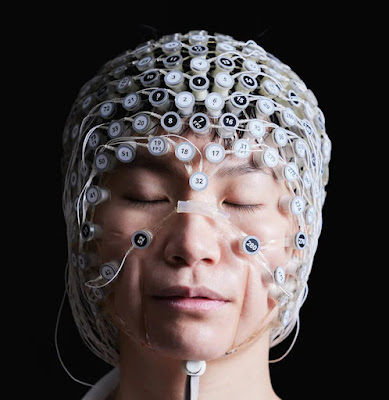THIS device may not nudge your brain into deep sleep
The Washington Post used this picture of a saline-filled 280-channel Geodesic Head Web1 to illustrate a new wearable device that aims to enhance slow wave sleep (SWS). The device delivers low-level current (0.5 mA) at 0.5 Hz to mimic the frequency of EEG naturally recorded during SWS (0.5-1 Hz). However, this is impossible with saline sensors, which would also dry out well before the night is over.
The WaPo article accurately showed different stages of applying the net, including measuring the head, checking impedences, and filling sensors with saline (above). A published journal article used similar Geodesic technology but using 256 electrodes filled with conductive gel (Hathaway et al., 2021). This setup was able to deliver transcranial electrical stimulation (TES) at 0.5 Hz. Time spent in deep sleep was increased by 13% for active vs. sham stimulation. The BEL website shows people snoozing while wearing this headgear.
Footnote
1 This net is made by BEL Company and is the latest iteration of the 256-channel Geodesic Sensor Net made by EGI/Philips. Both designs were developed by Dr. Don Tucker at the University of Oregon. In 2017 he sold his company Electrical Geodesics, Inc. to Philips for $37 million. He now runs Brain Electrophysiology Laboratory (BEL) Company.
Reference
Subscribe to Post Comments [Atom]














0 Comments:
Post a Comment
<< Home